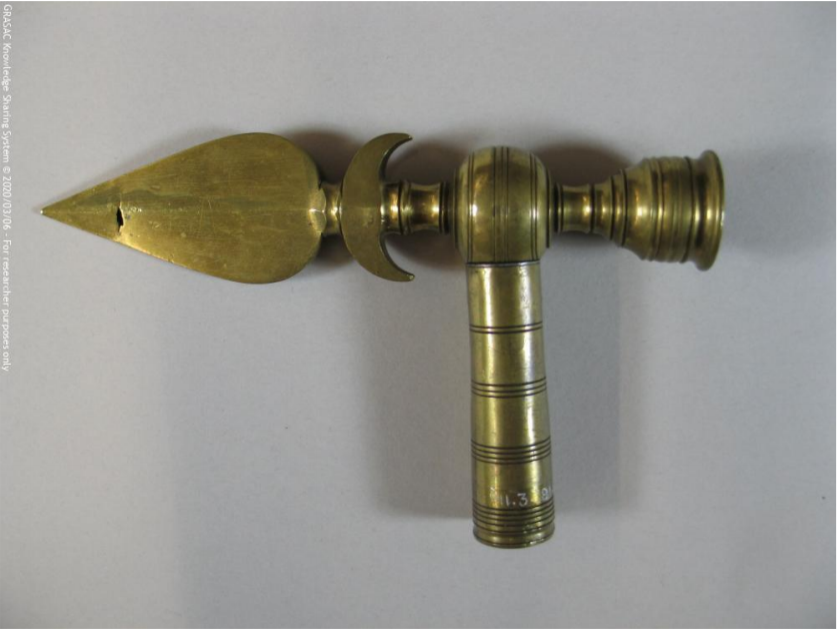By Autumn Epple

The Royal Ontario Museum hosts several objects from one of the most decisive conflicts in North American colonial history, the War of 1812. This handsome brass tomahawk pipe, with its detachable wood stem, fine lead mouthpiece and sharpened edge, was a gift from British Major General Isaac Brock to Shawnee leader Tecumseh. It was part of an exchange that took place during their first meeting at Fort Amherstburg, Ontario, on August 13, 1812. King George III had several of these specific tomahawk pipes made to be offered as gifts to Indigenous leaders in hopes of gaining their support, and knowing this, Brock respectfully presented the Shawnee chief with the object. Accounts from the meeting suggest that Tecumseh and Brock were greatly impressed by one another, and agreed to form an alliance between the British and Shawnee that would aid the weak defences of Upper Canada. Three days later, Brock and Tecumseh claimed an impressive victory together at Fort Detroit.
This tomahawk pipe came to represent their enduring agreement as allies, and Tecumseh kept it with him even in battle. The GKS notes that there is a small hole made in the tip of the blade, perhaps made by Tecumseh himself for attachment. The wooden detachable stem unsurprisingly has a few marks, which indicates it was certainly used by its owner. Shortly after the Siege of Detroit, Brock was killed in action at Queenston Heights in October 1812. Nearly a year later, with the pipe tomahawk tucked behind his belt medal, Tecumseh also fell at the Battle of the River Thames in what is today Chatham-Kent, Ontario. Tecumseh’s chief warrior, Oshawana, an Anishinaabe man and future chief of Walpole Island, carefully removed the belt medal and the pipe tomahawk for safe keeping. Tecumseh’s burial place is unknown, but thanks to Oshawana’s efforts, the pipe tomahawk and its story are visible and celebrated today.
Despite coming from incredibly different worlds, Brock and Tecumseh were both experiencing invasion from American forces on the territories in which they lived. Even after their deaths, British and Indigenous forces fought side by side to end the United States’ conquest of Canada. The icon status attributed to the British Major General and Shawnee chief is one that reigns powerfully two centuries later, and there is no denying the spirit of strength and friendship that is still alive within this simple pipe tomahawk.
For more information about Brock and Tecumseh, see:
Benn, Carl. The War of 1812. Mississauga: Osprey Publishing, 2002.

[…] A Gift of Alliance: Tecumseh’s Pipe Tomahawk, by Autumn Epple […]